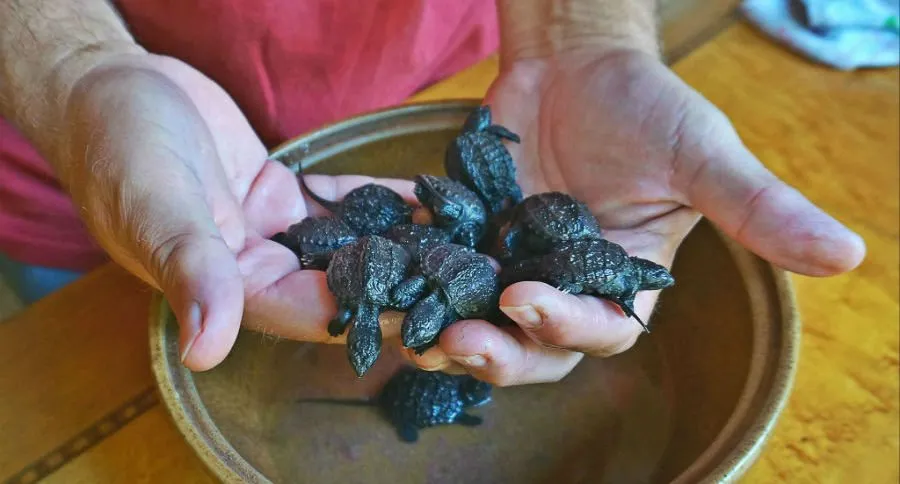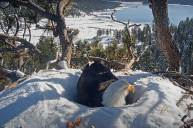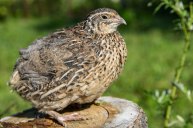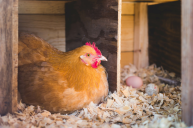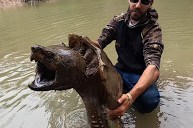After deciding to rescue a clutch of snapping turtle eggs from persistent predators, this is what happened as I tried to incubate and hatch the tiny terrapins.
I've long been fascinated by and attracted to snapping turtles. They are possibly my favorite wild critter.
They're ornery, individualistic, secretive, prehistoric, and very delicious. And they just look cool.
No matter what their age or sex, they always strike me as the wizened, grumpy old men of the lake or pond.
So when we found a big female snapper laying her eggs in the yard earlier this spring, I was excited for the prospect of eventually witnessing lots of tiny snapping turtles scurrying back down to the lake.
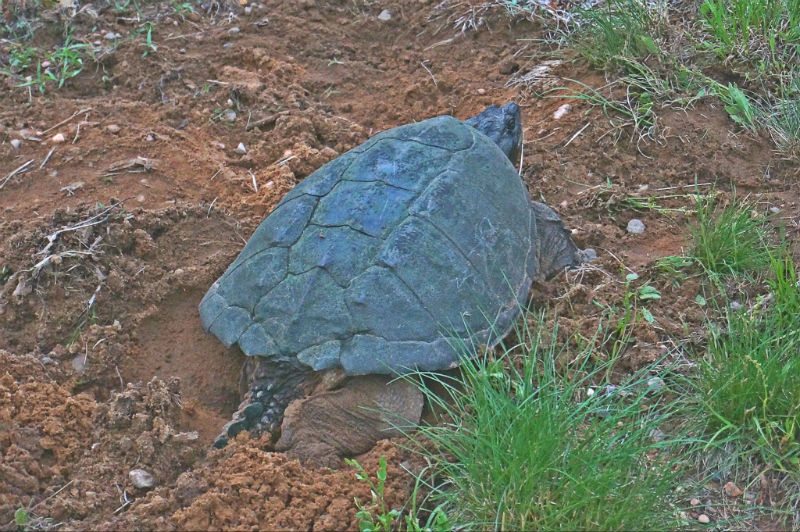
The mother snapper dug the hole and laid her eggs on June 12. Snapping turtle eggs normally incubate for around 90 days, but they can, depending on the average temperature during that time, hatch anywhere from 80 to 120 days after being laid. In rare cases I understand that they can also overwinter and hatch the following spring.
I kept an eye on the spot throughout the summer, hoping that no hungry predator would dig up the nest and devour the eggs. Approximately 90% of all turtle egg clutches are lost to predators such as skunks.
And of course, many turtles are also killed on roads during their spring egg laying period.
I began to pay closer attention to the nest area as we approached the 80 day mark, checking the site at least twice a day.
Then, around day 85, I went out one morning and, for some unknown reason, saw that a raccoon had tried to dig up the clutch. Its prints were all over the place and a hole was dug that fortunately missed the nest by mere inches.
I covered the hole the raccoon had dug and kept my fingers crossed. But the next morning when I went out I discovered that a skunk had done the very same thing. His identifying scat was outside of the hole he had dug, but he too had just missed the clutch, though only by an inch or two.
Now I was worried. I figured that if these nocturnal predators were determined to keep attacking the area where the eggs were hiding it would only be a matter of time—perhaps a night or two—before they hit pay dirt and consumed all of the soon-to-be-hatched little snappers.
I was desperate and decided to take matters into my own hands. I dug up the nest.
Understanding that turtle eggs are very delicate once they begin to develop, and are sensitive to their positioning, I carefully brushed the dirt away from the eggs and marked the top of each egg with a Sharpie as I pulled it out and set it in precisely the same position in a large bowl full of sand that came directly from the location of the nest.
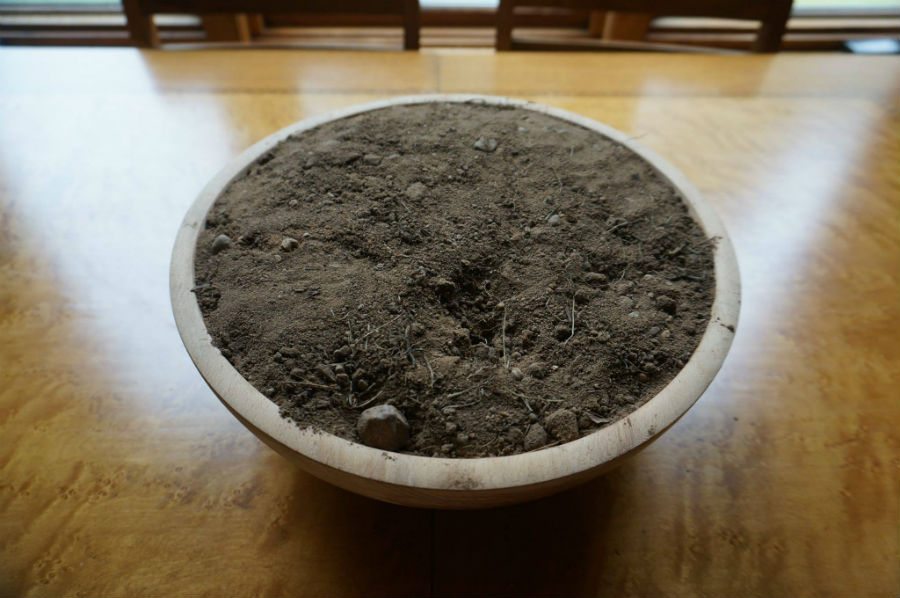
Then I covered the bowl of turtle eggs with sand and brought it into the house. I reburied forty-six eggs in all.
But before I covered it I took a single egg and tried to candle it. I held a strong flashlight up to it in our darkened bathroom, but could see nothing. As I prepared to replace it I must have squeezed it a little too hard and it suddenly burst open. Inside was a small turtle still attached to its yolk sac.
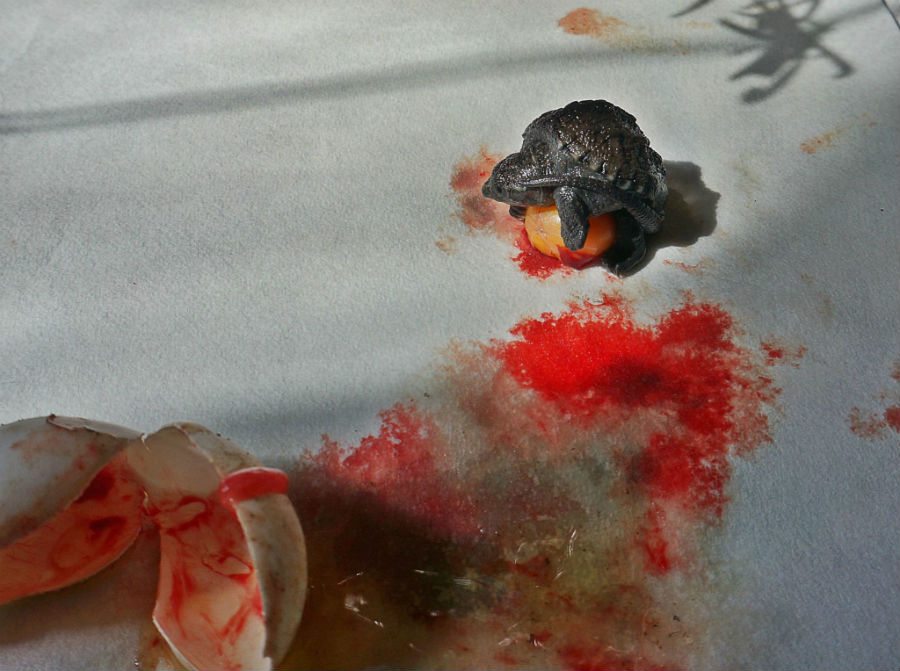
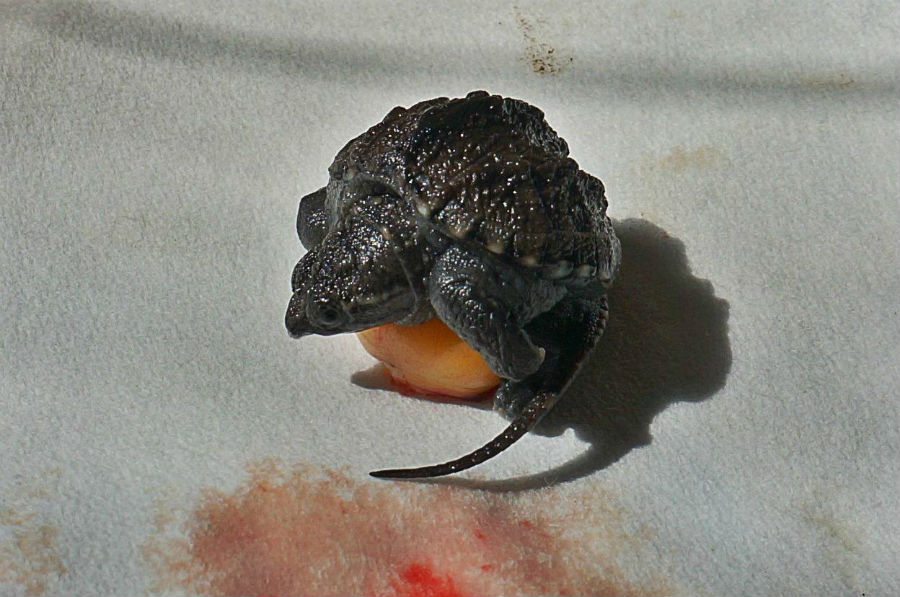
It was alive, though it moved very slowly indeed. I knew that the rest of the eggs were close to hatching, and could only hope that my handling them had not upset their delicate biology.
Several days went by and nothing happened. No turtles hatched and crawled out of the sand. I was worried that bringing them into the house had mucked things up.
Then one morning—day 92 of the incubation—my wife called me into the living room. She pointed to the corner of the room and there was a small turtle looking up at us. It was covered in sand and was several feet from the bowl on the table. She said that she checked the bowl and saw a small depression in the sand and a tiny pencil trail running across the surface of the sand.
During the night the little turtle had hatched, crawled out and off of the table and fallen to the carpeted floor. We were lucky we found it.
I added the little terrapin to the bowl where I had its first sibling.
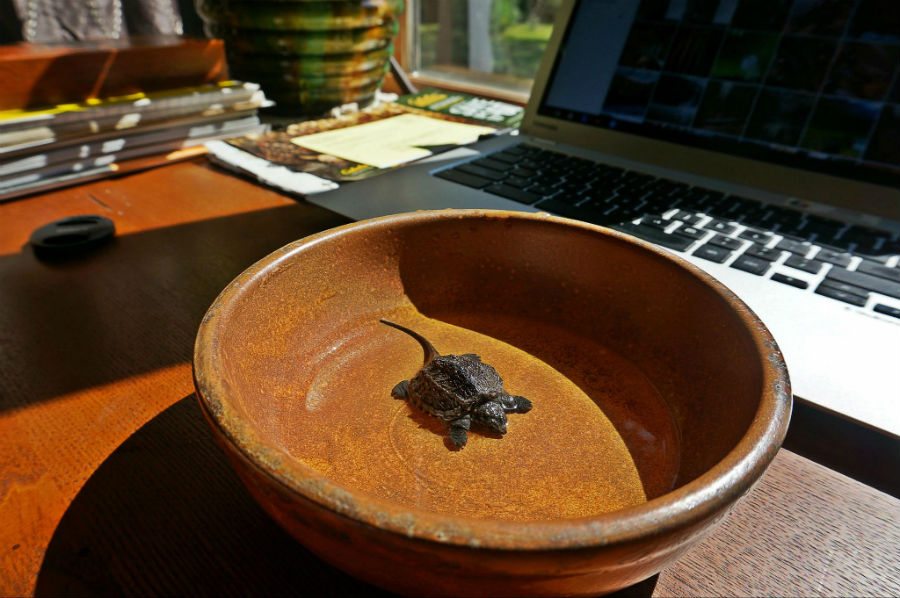
That second turtle would be the only one that hatched for several more days.
I decided to brush away the sand from the upper layer of eggs in the bowl (I have to admit, I was getting impatient). I watched them closely, and waited...and waited...and waited.
I had always thought that turtles hatched together or within a very short period of time from one to the other. These eggs were certainly taking their time.
Finally, around day 96, more turtles began to break from their shells. It was an extremely slow process, as they would crack the shells with a tiny "hen's tooth" that was visible just under the tip of their snouts.
Then they would seem to tire and would slowly poke their heads from the shells, before ever so slowly emerging. This process could take hours.
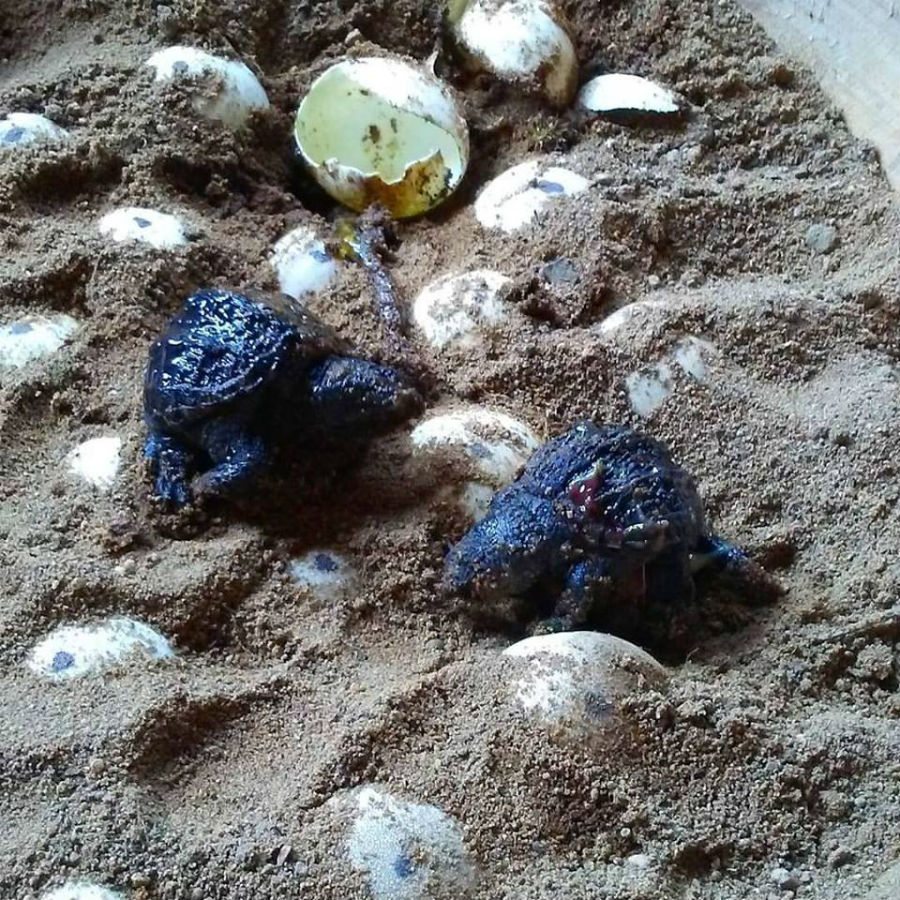
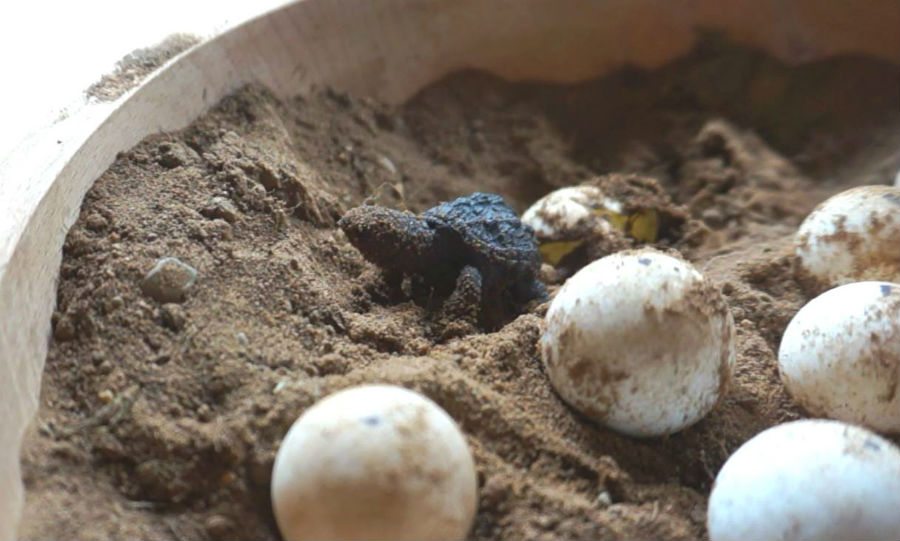
The turtles that would hatch would do so over the next several days. But unfortunately not all of the eggs were viable. Many began to collapse upon themselves, appearing indented. These I gently cut open to find that no turtle was in them at all (only a yolk) or the turtle was small and deformed.
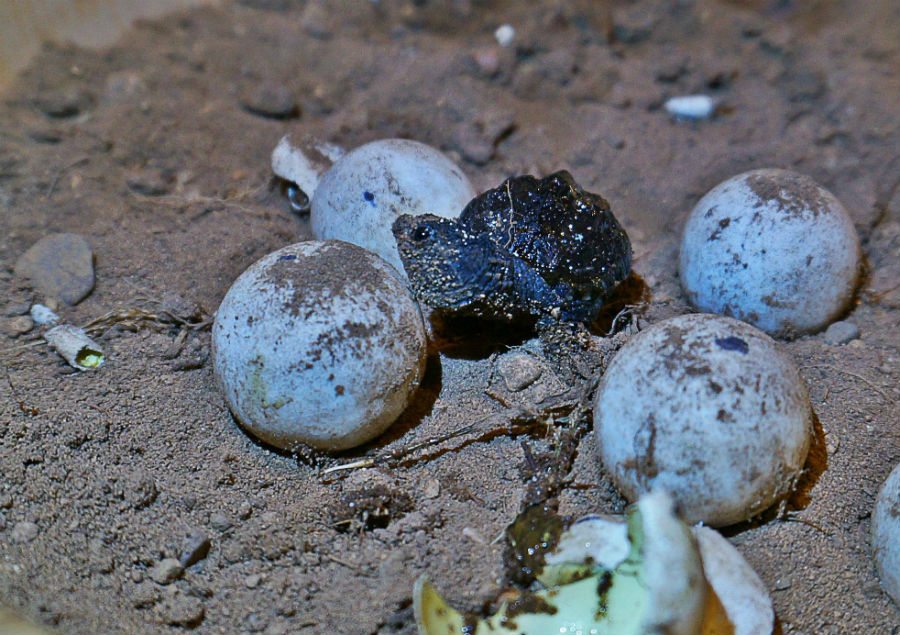
Sometimes the deformed turtle would be alive, but only briefly before it expired.
One time two baby turtles hatched at around the same time, both appearing quite strong. I placed them in a bowl with a little water. I came back to check on them a few hours later only to find one of the two on its back and apparently drowned.
I removed it from the bowl and checked it carefully for any signs of life. It moved! I was heartened and hoped that it would recover, so I placed it in a bowl with only a damp bottom, and checked it several times a day.
It seemed to recover but appeared to have some sort of nerve damage, as occasionally it would become listless and appeared to be dying again. This went on for about a week, until finally it succumbed to its injuries and died.
I kept the turtle eggs until around 102 or 103 days, when there were only about six left and nothing had happened with them for a few days.
I assumed that most of them were not viable, so I gently cut them open. All but two were undeveloped yolks. Two that were still viable and alive. I peeled away the clear membrane and placed them in a bowl, being sure to keep them upright and on top of their attached yolk sac.
They ultimately survived and joined the rest of their siblings in a large bowl where I had placed everyone.
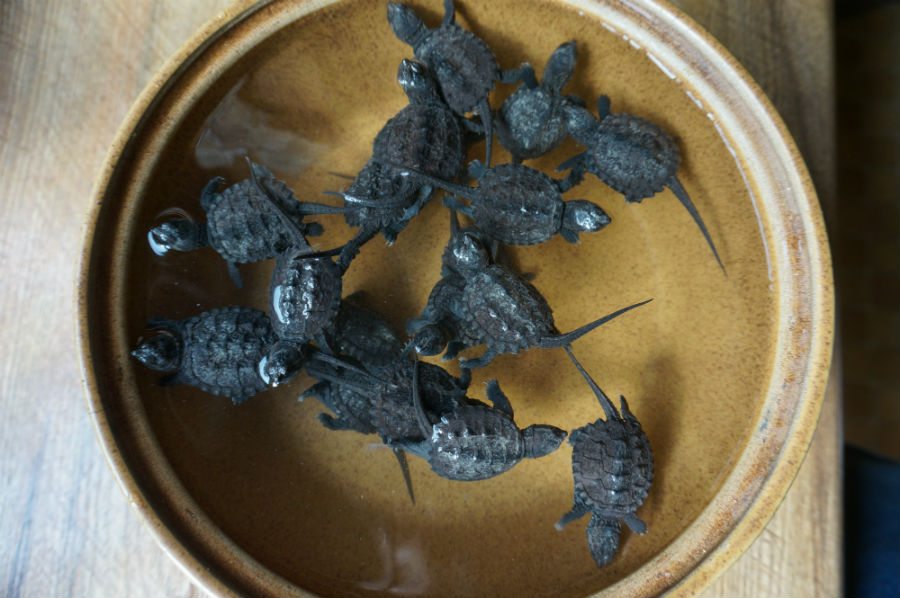
I kept the baby turtles for a few days, until they had each absorbed their attached yolk sacs and it appeared that everyone was going to survive and be in good shape. I fed them some commercial turtle food, but they didn't appear to be interested in the food at all.
From the time of the first turtle egg hatch on day 85 until the final egg hatch at around day 103, both of which were "forced" hatchings, it took 18 days for the entire clutch of eggs to hatch, or at least those that would hatch.
This surprised me, and I wonder what, if any, impact my digging them up had on the incubation period.
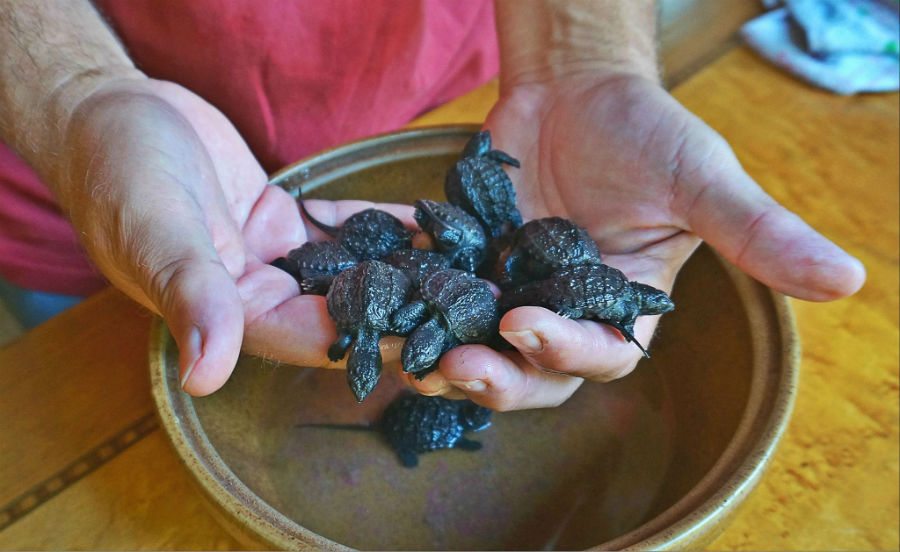
Of the 46 eggs recovered, more than a third of them hatched and survived into healthy, viable baby turtles. Around a third of them were completely undeveloped eggs with no sign of embryonic development, and slightly less than a third were deformed and died shortly after hatching.
I don't know if this is a typical survival percentage for snapping turtles or not. My gut tells me it's not, but I don't know for sure.
What I am fairly certain of is that none of the turtles would have hatched had I not secured them from the nest and allowed them to hatch in relative safety.
The clutch was being targeted by predators for two straight nights and it seemed highly unlikely that they would last long with that kind of predatory attention being paid to them.
Here's a video and some photos of the release of the baby turtles.
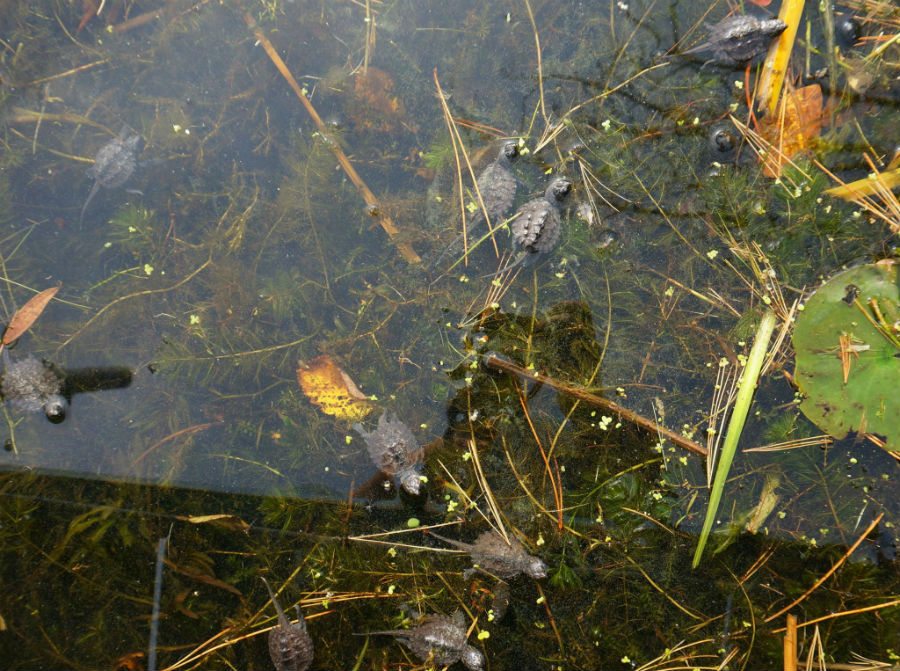

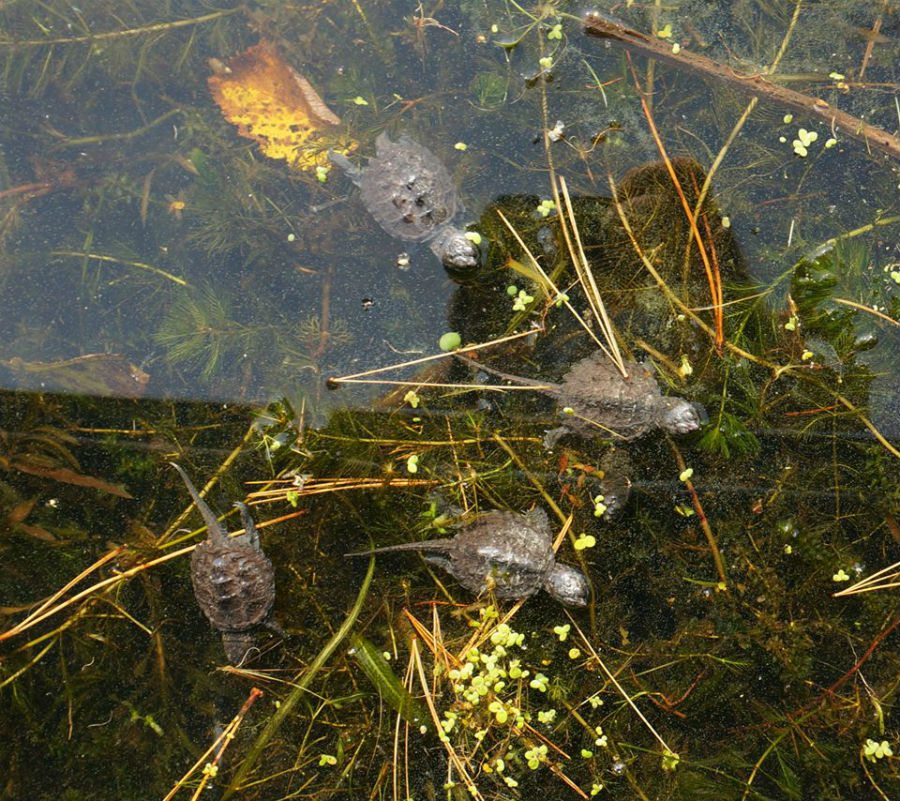
I took 18 baby turtles down to the lakeshore and released 15 of them into the shallow, weedy water. I kept three and they seem to be doing fine up to now. I'll likely keep them through the winter and then release then come spring of next year if they're still alive.
It was a great, enlightening experience, and I like to think I did a small part in ensuring that a few more snapping turtles made it into the wild.
Like what you see here? You can read more great articles by David Smith at his facebook page, Stumpjack Outdoors.
NEXT: Snapping Turtle Resists Arrest
